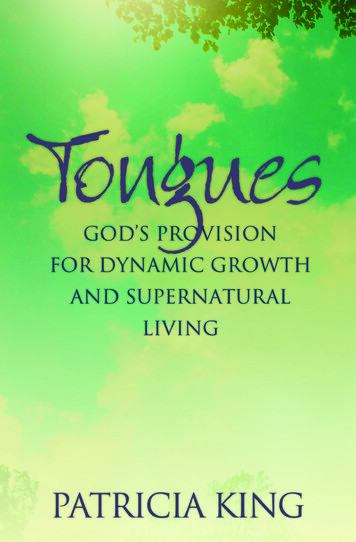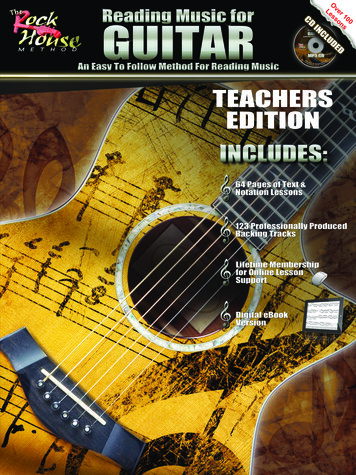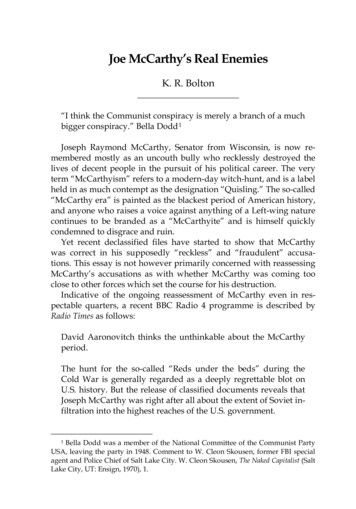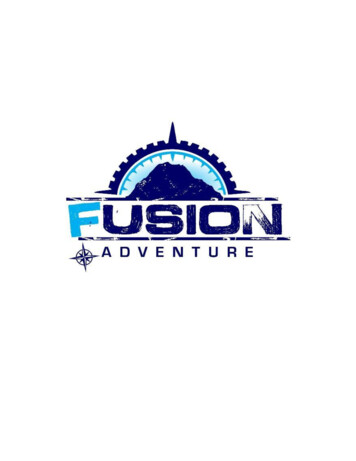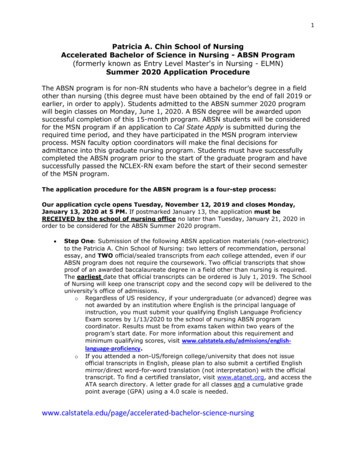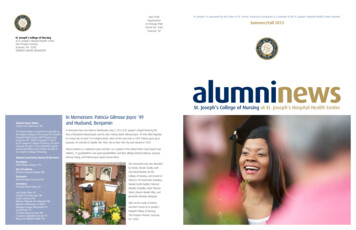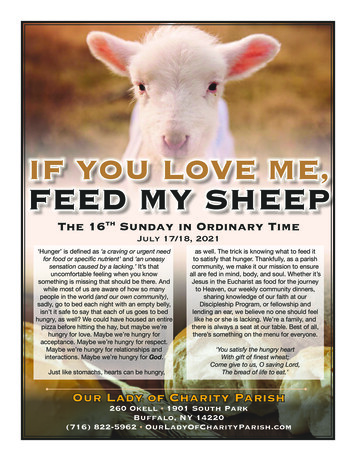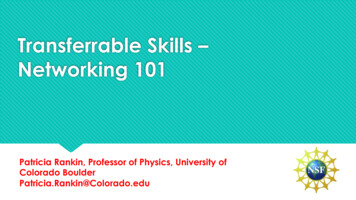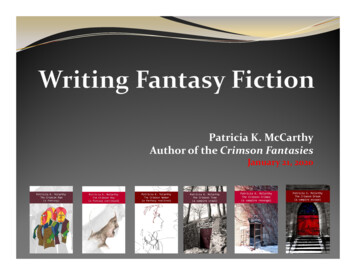
Transcription
Patricia K. McCarthyAuthor of the Crimson FantasiesJanuary 21, 2020
What is fantasy fiction? Sub‐genres Where creative ideas come from What your story cannot do without Ouch! Graphic content Plotting considerations How to Write Fantasy Fiction (10) Universal Myths Devise a basic outline
Oldest genre in fiction Fantastical stories
Plot commonly uses magic Set in imaginary worlds Not Sci‐Fi!
Most celebrated works Wide audience
In popular culture, the genre is primarilymedieval in theme but in a broad sense Any location can be used Fantasy allows for a lot of latitude
Children’s classics considered more acceptable Fantasy and Science Fiction began to be associated withone another in the 1920’s In 1923, the first all‐fantasy fiction magazine was createdWeird Tales; followed by The Magazine of Fantasy andScience Fiction By 1959, fantasy began to gain popularity, to reach amuch large audience in the 20th Century
Rudyard Kipling and Edward Rice Burroughs established“Lost World” fantasy, which was the most popular form offantasy in the early part of the 20th Century Peter Pan and The Wonderful World of Oz were publishedin early 20th Century J.K. Rowling’s Harry Potter series and George R.R. Martin’sSong of Ice and Fire series (Game of Thrones) have best‐selling status that no one could have conceived 100 years ago
Anthropomorphic Dark High Historical Low Mythic Romantic Science Urban
Animals replace humans Long‐standing tradition 19th & 20th Century examples
Gothic or contemporary Combines elements Sympathetic frommonster’s viewpoint
EpicSerious in toneArchetypical charactersGood vs. Evil
Sub‐genre of Historical Fiction Occurring before 20th Century Three basic approaches to plot
Set in either real or fictional placeLow refers to There’s just enough fantasy to blur the linesForms of low fantasy include
Myths, Folklore and Fairy Tales Overlaps with Urban Fantasy
Using many elements/conventions of Romance genre Concerned with relationships Magic in narrative is innate
Not Science Fiction Considered a mixed genre withinthe umbrella of Speculativefiction Draws elements from Sci‐Fi, Sci‐Fantasy & Horror
Also known as Urban Paranormal Humans co‐existing w/ Supernatural Defined by place
Dracula Lord of the Rings trilogy Harry Potter Series Twilight Series Dr. Seus Alice in Wonderland The Legend of King Arthur
Ancient myths & legends Real or Fantasy locations Magic and supernatural
Combinational Explorative TransformationalThere is no such thing as
Character Development Setting Narrative Style Plot & Story Arc Pacing
Character development Characters are delivery mechanisms that exist inservice to a plot Main protagonist(s) to care about Villain(s) to hate (or admire as an anti‐hero)Things to Consider: Influences such as parents, hardships, disabilities Vices, pet peeves, childhood backstory Strong points, failings, middle or nickname Be prepared to kill off your favourite character
Setting The sky’s the limit if its pure fantasy Research your setting if its urban/contemporary Weather Clothing History, whether real or imagined Elaborate interiors Describe smells and sounds
Narrative style First Person – most common Diary style Third Person – most popular Present – immediacy; popular with poetry Past Tense – works easily with First or Third person
Plot Internal logic and flow (cohesive structure) You cannot suddenly introduce an element thathas no logical place in the story Effort put into plotting beforehand will pay off Plotting technique coming up
Story Arc The purpose is to move the character(s) along Every classic story has a progression of events, i.e. Stasis Trigger Quest/Hero’s Journey Surprise Critical Climax Reversal Resolution
PacingCliffhangers Flashbacks Foreshadowing
Violence Swearing Romance vs. Erotica
Christopher Booker’sThe Seven Basic Plots: Why We Tell Stories (1) Overcoming the Monster (2) Rags to Riches (3) Quest (4) Voyage and Return (5) Comedy (6) Tragedy (7) Re‐birth
What kind of fantasy fiction grabs you? Write what you enjoy reading (and then stopreading your favourite genre while you write) Average novel word‐count is 60,000 to 85,000 The big novels (James Michener) are 100,000
Step One: Add in Mythology
A God’s Resurrection Dragons Paradise Lost Epic Cosmic Battle The Hero’s Quest Explanations Vampires The Atlantis Myth Ap0calypse The Great Flood
Step Two: Build yourself a world
Step Three: Magic & magical creatures whichincludes supernatural
Step Four: Attributing ‘x’ number of words to each eventfor the beginning, middle and end
Beginning: Introduction of Characters Setting Conflict Middle: Story unfolds Ending Conclusion or bridge to next installment
THANK YOU!
Fantasy and Science Fiction began to be associated with one another in the 1920’s In 1923, the first all‐fantasy fiction magazine was created Weird Tales; followed by The Magazine of Fantasy and Science Fiction By 1959,

